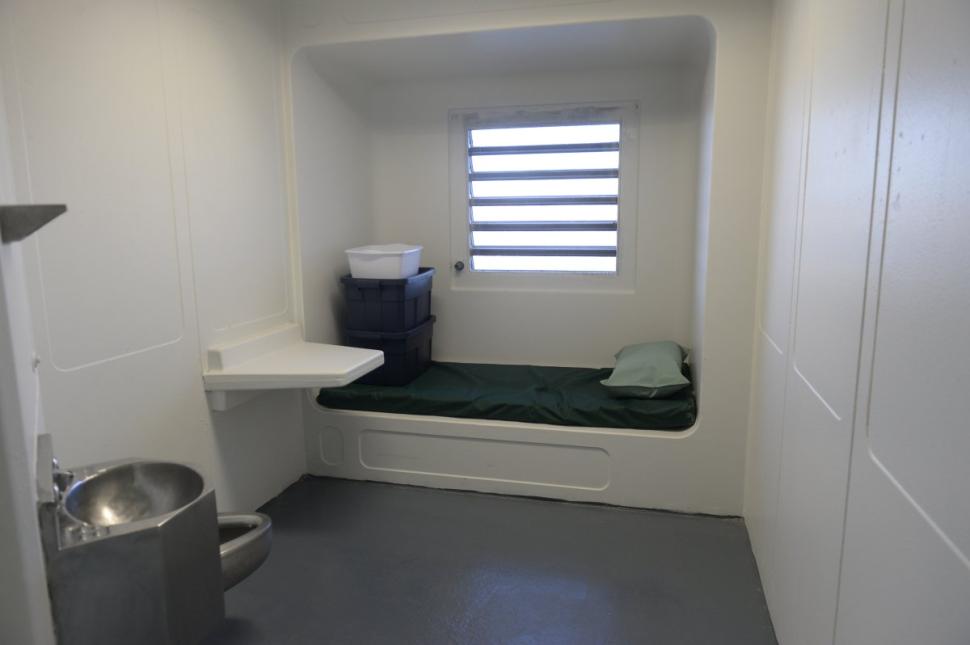 New York Must Pass #HALTsolitary Now!
New York Must Pass #HALTsolitary Now!
NYCAIC’s response to the Governor’s proposal re solitary confinement
In response to the Governor’s budget proposal to limit the use of solitary confinement in New York, the NYCAIC #HALTsolitary campaign urges the Governor and the legislature to take a much more humane, effective, and comprehensive approach by finally passing the HALT Solitary Confinement Act, S.1623/A.2500. We also urge the Governor and the legislature to adopt far more fundamental changes to the entire injustice/incarceration system, including related to parole, pre-trial justice, voting rights for people in prison, and more, and support the recommendations of allies such as Release Aging People in Prison (RAPP), Citizen Action, JustLeadershipUSA, VOCAL-NY, Drug Policy Alliance, defenders organizations, and more.
The Governor’s recognition of the need to limit solitary confinement in New York is a positive step. However, the proposal has severe limitations, including that it would 1) continue to allow people to be held in solitary indefinitely, 2) leave behind many of the people who can suffer the most from solitary, 3) continue to allow people to be sent to solitary for minor rule violations, 4) not provide adequate alternatives to solitary, 5) continue to allow anyone to be held in solitary for periods of time that amount to torture, and 6) allow people to be warehoused in alternative units indefinitely. Specifically, some of the key limitations of the Governor’s proposal include:
- Indefinite Solitary Continued: People can still be held for months, years, decades, or indefinitely in solitary confinement without limit under this proposal. All of the protections in the proposal only seem to apply to “segregated confinement” which is defined in existing law as “disciplinary confinement” in “special housing units or longterm keeplock units”. There do not seem to be any limitations (related to length of time or conditions) for people in various other forms of solitary confinement, including people held keeplock in their own cells (rather than in SHU or a longterm keeplock unit), administrative segregation, or protective custody. The protections of HALT would apply to all of these types of confinement, which all amount to solitary.
- Leaving Behind Some of the People Most Vulnerable to Harm: The proposal leaves behind many groups of people who are most vulnerable to be particularly harmed by solitary confinement, including people with pre-existing mental health conditions, young people aged 18-21, and people with physical disabilities. The only two “special populations” that would be barred from solitary under the proposal are adolescents in a designated Adolescent Facility and pregnant women/new mothers. HALT would also bar people with mental health needs, elderly people, young people aged 21 and younger, and people with physical disabilities since all of these groups face particularly devastating harm in solitary.
- Solitary for Minor Rule Violations: There are no restrictions on the criteria of who can be placed in solitary under this proposal, so that people will still be able to be sent to solitary for almost any minor, non-violent rule violation. HALT would restrict the criteria for who can be placed in segregation or alternative units to more serious conduct.
- Inadequate Alternatives to Solitary: The alternative Residential Rehabilitation Units in the proposal can still operate as solitary. Under the proposal, the alternative RRUs allow only 5 hours out of cell in a day and only four days a week (rather than 7 hours a day, 7 days a week under HALT). That means people will still be held in full 22-24 hour a day solitary three days a week, and will still be locked down at least 19 hours the other days. Also, there is no requirement for the out-of-cell hours to involve congregate interactions with other people or even a requirement for the out-of-cell time to involve programs. Under the proposal, the out-of-cell time could even, for instance, involve a person being alone in a cage for several hours of recreation. In other words, people could still be alone 24 hours a day in the alternative units.
- Continued Routine Practice of Torture. The proposal would codify lengths of time in solitary that amount to torture. The time limit on segregation would be 90 days as of April 2021, 60 days by Oct 2021, and then ultimately 30 days by April 2022. In addition, there does not seem to be any protection against people being returned to solitary very shortly after being removed at the designated limits. HALT would create a limit of 15 days in line with how international standards define torture, and protect against people being quickly returned to solitary through a limit of 20 days out of any 60. Also it is not clear why NY needs over three years to implement the proposed 30-day limit. The number of people who will lose their minds or their lives in that time is not acceptable. Moreover, again these time limits would not apply to people in administrative segregation, keeplock in their own cells, or protective custody. Under HALT the time limits would apply to anyone in solitary.
- Warehousing in Alternative Units: There does not appear to be any time limit on being held in an alternative RRU unit, and in fact the proposal allows time in the RRUs to be involuntarily extended beyond a person’s disciplinary sanction, so people could end up being warehoused in what may end up being a very punitive environment for months, years, and even longer. HALT has limits on how long someone can stay in an RRU.
Solitary confinement is torture. Thousands of people, disproportionately Black and Latinx people, suffer in solitary in NY each day, and tens of thousands each year: 22 to 24 hours a day in a cell without any meaningful human contact or programs. People continue to spend months, years, and decades in solitary in NY (including over 30 years). These conditions cause devastating physical, mental, and behavioral harm. The entire United Nations, including the US, passed rules prohibiting solitary beyond 15 days for any person, because it otherwise amounts to torture. Colorado implemented a 15-day limit in its prisons and reduced the number of people in solitary from 1,500 to 18. HALT would similarly include a 15-day limit on solitary, and would create more humane and effective alternatives. States that have reduced solitary have seen a positive impact on safety for both incarcerated people and correction officers.
The Humane Alternatives to Long Term (HALT) Solitary Confinement Act, S.1623/A.2500, is the critical bill to remedy the harm of solitary confinement. It would end the torture of solitary confinement for all people in New York prisons and jails, and create more humane and effective alternatives. The Mental Health Association of NYS, the UN Special Rapporteur on Torture, the NY Association of Psychiatric Rehabilitation Services, Labor-Religion Coalition of NYS, and over 200 organizations across New York State now support HALT. So do over 120 NY legislators, including 99 New York Assembly Members who voted to pass HALT in 2018 and a majority of New York Senators (HALT currently has 32 co-sponsors in the Senate and a number of other Senators who have committed to vote for HALT). HALT is the only bill that will end the torture of solitary for all people in New York prisons and jails. It is urgent that the legislature and the Governor immediately enact HALT. They must also make other urgent and necessary changes related to parole, pre-trial justice, voting rights for people incarcerated, higher education for people incarcerated, and many other changes.
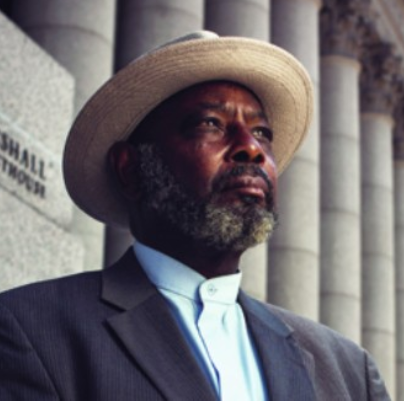 We at the Campaign For Alternatives to Isolated Confinement wish to express our deepest condolences to the family of Mujahid Farid. Our prayers go out to them in their time of loss.
We at the Campaign For Alternatives to Isolated Confinement wish to express our deepest condolences to the family of Mujahid Farid. Our prayers go out to them in their time of loss.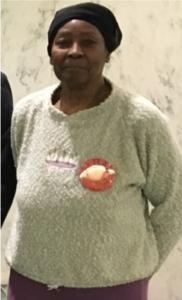 New York Campaign for Alternatives to Isolated Confinement (CAIC) would like to honor and remember one of our dear members Carole Willis, who recently passed away at the age of 79. A lifelong New Yorker, Carole was a wonderful, caring, and giving person who had a beautiful heart and soul. Carole was actively involved with CAIC and the Correctional Association of NY for the last several years, and her son Nicholas Zimmerman spent over a decade in solitary confinement.
New York Campaign for Alternatives to Isolated Confinement (CAIC) would like to honor and remember one of our dear members Carole Willis, who recently passed away at the age of 79. A lifelong New Yorker, Carole was a wonderful, caring, and giving person who had a beautiful heart and soul. Carole was actively involved with CAIC and the Correctional Association of NY for the last several years, and her son Nicholas Zimmerman spent over a decade in solitary confinement.
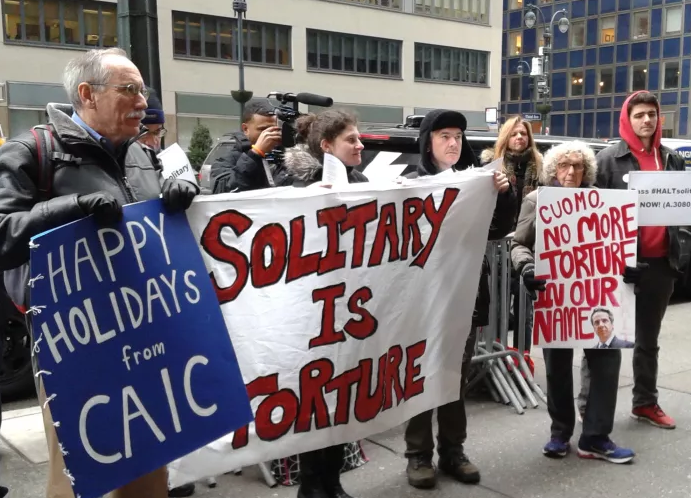 by Victoria Law. Excerpted from
by Victoria Law. Excerpted from 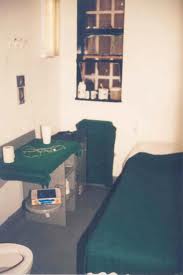
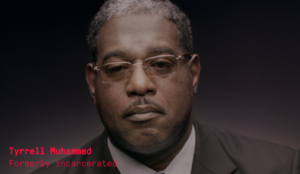 “We Are Witnesses”
“We Are Witnesses”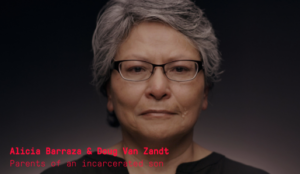 “He wasn’t a bad kid. He was just a kid that was mentally ill.”
“He wasn’t a bad kid. He was just a kid that was mentally ill.”
Follow the #HALTsolitary Campaign